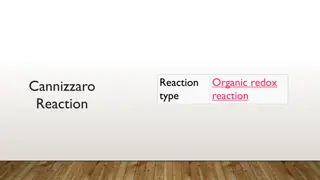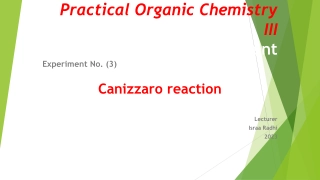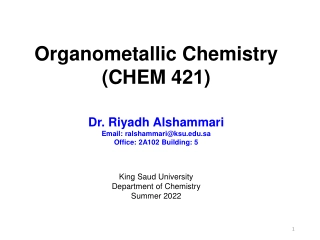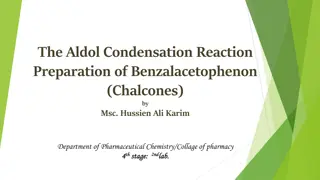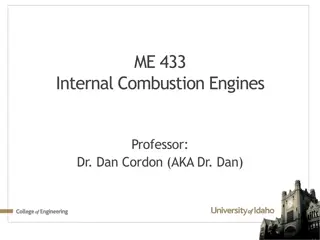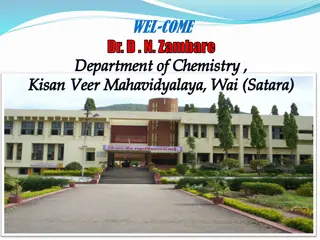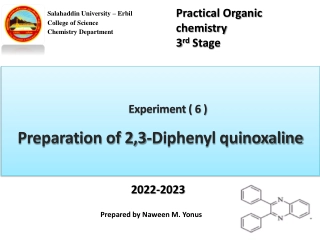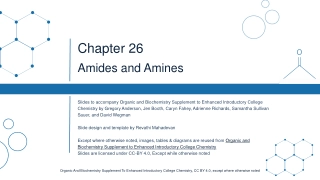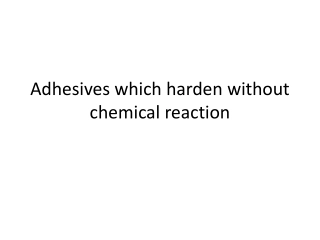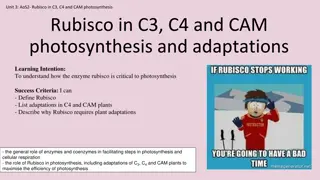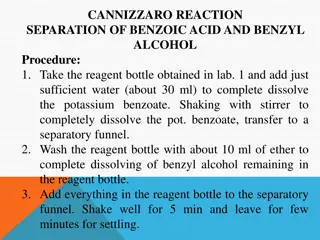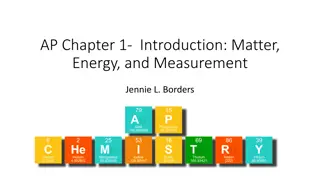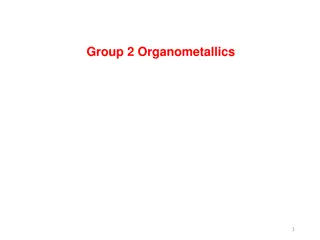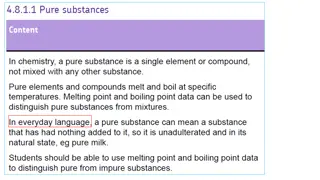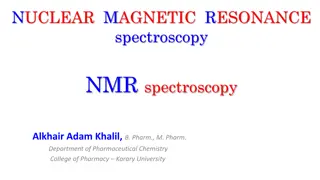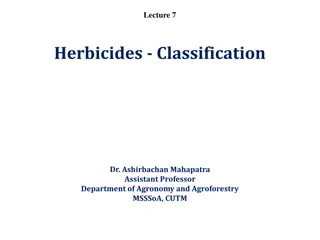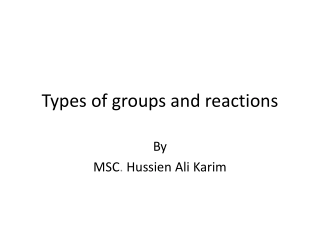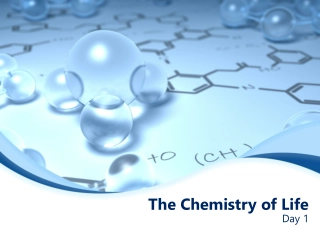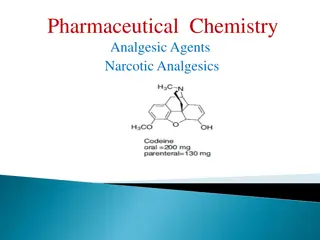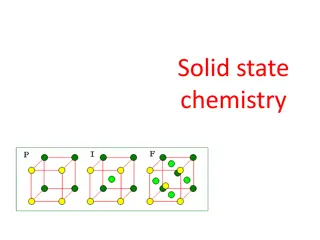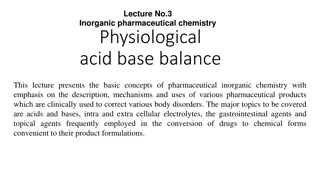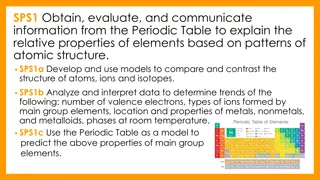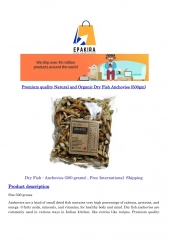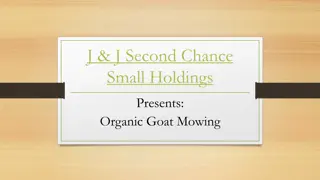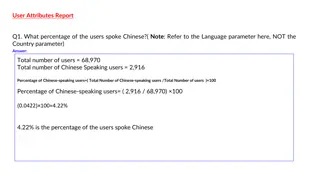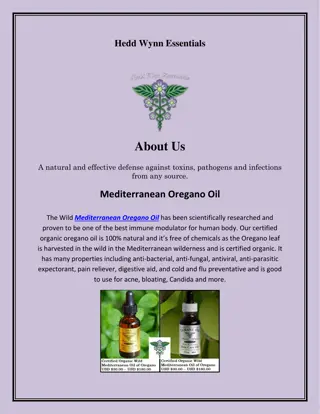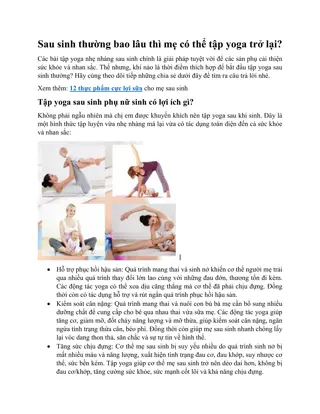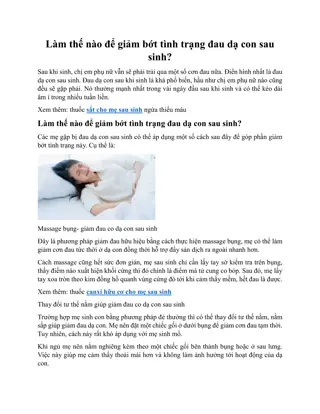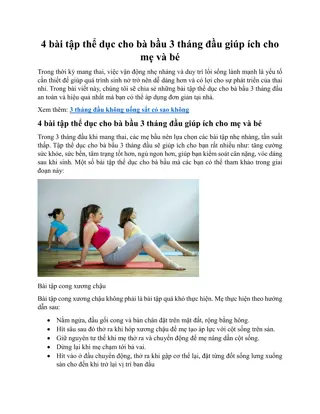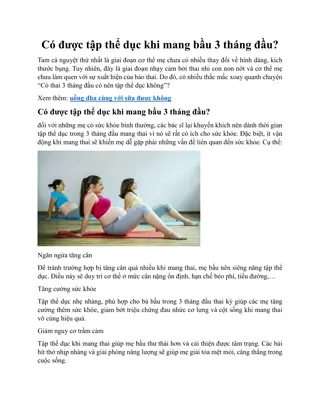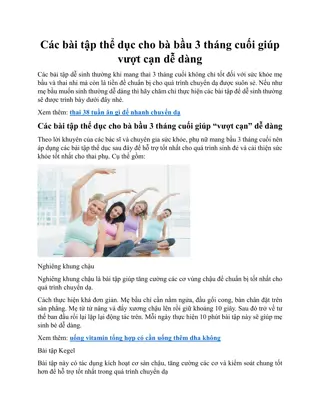Understanding the Diels-Alder Reaction in Practical Organic Chemistry
The Diels-Alder reaction is a fundamental method in organic chemistry for producing cyclic organic compounds by combining a conjugated diene with an alkene. This reaction, named after Otto Diels and Kurt Alder, involves the formation of a six-membered ring with specific bond rearrangements. Conjugated dienes must be in a specific conformation to participate, and electron-rich groups enhance reactivity. This reaction is essential in organic synthesis due to its mechanistic and theoretical contributions.
Understanding the Diels-Alder Reaction in Practical Organic Chemistry
PowerPoint presentation about 'Understanding the Diels-Alder Reaction in Practical Organic Chemistry'. This presentation describes the topic on The Diels-Alder reaction is a fundamental method in organic chemistry for producing cyclic organic compounds by combining a conjugated diene with an alkene. This reaction, named after Otto Diels and Kurt Alder, involves the formation of a six-membered ring with specific bond rearrangements. Conjugated dienes must be in a specific conformation to participate, and electron-rich groups enhance reactivity. This reaction is essential in organic synthesis due to its mechanistic and theoretical contributions.. Download this presentation absolutely free.
Presentation Transcript
Practical Organic chemistry 3rd Stage Salahaddin University Erbil College of Science Chemistry Department Experiment ( 3 ) The Diels-Alder Reaction of Anthracene with Maleic Anhydride 2022-2023 Prepared by: Pshtiwan A. M. 1
Diels-Alder reaction is a method of producing cyclical organic compound, the reaction is performed between a conjugated diene and an alkene (dienophile) to form unsaturated six-membered rings. Diels-Alder reaction is probably the most widely used methodology in organic synthesis today, it has contributed greatly to the development of mechanistic and theoretical chemistry. This reaction is named for Otto Diels and Kurt Alder who in 1950 received the Nobel Prize for their experiments. 2
In all Diels-Alder reactions, three ? bonds, two in a diene and one in a dienophile, reorganize to give a six-membered ring containing one ? bond and two new sigma bonds. This process is concerted, where bonds form and break at the same time, and the entire reaction takes place in one step in the presence of heat. The class of reactions to which Diels-Alder belong is termed as cycloaddition. The electrons are transferred cyclically between the diene and the alkene to form a cyclic adduct 3
Diene: is the 4electron component. It is electron- rich, like a nucleophile in a Lewis acid-base reaction. Simple dienes like 1,3-butadiene are sufficiently electron-rich to react, but electron-releasing groups such as alkyl groups (-R) or alkoxy groups (-OR) enhance a diene's reactivity. 4
The diene must be conjugated to participate in a Diel-Alder reaction. No conjugation, no Diel-Adler reaction. So while 1,3-butadiene readily undergoes Diel-Alder reaction, 1,4 pentadiene dose not. A: 1,2-Propadiene, B: Isoprene, also known as 2-methyl-1,3- butadiene,C:1,3-Butadiene, D:1,5-Cyclooctadiene, E: Norbornadiene, and F: Dicyclopentadiene. 5
The s-cis conformation is higher in energy than the s-trans conformation, due to steric hindrance. For some dienes, extreme steric hindrance causes the s-cis conformation to be highly strained, and for this reason such dienes do not readily undergo Diels-Alder reactions. 6
Dienophile is the 2 electron component called a "lover of dienes". Good dienophiles contain relatively electron-poor double bonds or triple bonds; at least one strongly electron-withdrawing group is needed. 7
Electron-releasing groups Electron-withdrawing groups CH3 (R), Alkyl CHO, Aldehyde OR, Ether COR, Ketone OCOR, Ester COOH, Carboxylic acid COOR, Ester NO2, Nitro C N, Cyano 9
The Diels-Alder reaction is enormously useful for synthetic organic chemists, not only because ring-forming reactions are useful in general but also because in many cases two new stereocenters are formed, and the reaction is inherently stereospecific. A cis dienophile will generate a ring with cis substitution, while a trans dienophile will generate a ring with trans substitution: 10
Cyclic dienes, on the other hand, which are locked in the s-cis conformation are especially reactive. The result of a Diels-Alder reaction involving a cyclic diene is a bicyclic structure: The rate at which a Diels-Alder reaction takes place depends on electronic as well as steric factors. A particularly rapid Diels-Alder reaction takes place between cyclopentadiene and maleic anhydride. 11
The purpose of this experiment is to form 9,10-dihydroanthracene- 9,10- , -succinic anhydride by way of a Diels Alder reaction between anthracene and maleic anhydride, as shown in the reaction below. Anthracene acts as the diene and maleic anhydride functions as the dienophile. Xylene (dimethylbenzene) is used as a high boiling temperature solvent so that the reaction will proceed quickly . 12
This reaction, shown above, does not occur to any significant extent, because the product formed has less aromatic stabilization. Testing has shown that products with two separate benzene rings are more stable than structures with a naphthalene component. 13
Procedure: 1) Weigh anthracene (0.5 gm) and maleic anhydride (0.25 gm). 2) Place weighed reagents into a flask then add xylene (6 mL). 3) Assemble a reflux apparatus. 4) Heat anthracene and maleic anhydride at reflux for 30 min. 5) Cool the reaction mixture in an ice bath (5 min). 6) Use vacuum filtration to collect crude product. 7) Dry and weigh the product on a watch glass. 8) Calculate the yield% for the product. 14
Question Give the structure of the product of each of the following Diels-Alder reactions. If no reaction occurs, state that such is the case and indicate what the problem might be. 15


